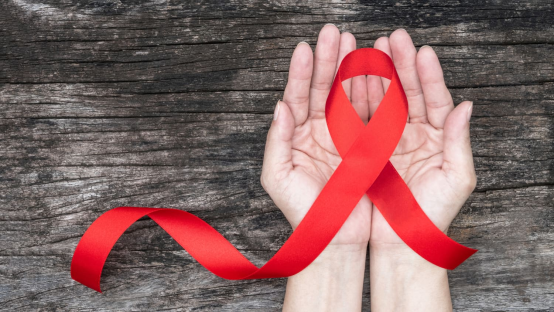Symptoms and Treatment Options for HIV Infection
Human Immunodeficiency Virus (HIV) is a virus that attacks the immune system, specifically the CD4 cells (T cells), which are essential for immune function. If left untreated, HIV can lead to Acquired Immunodeficiency Syndrome (AIDS), making the body more vulnerable to infections and certain cancers. Although there is currently no cure for HIV, there are highly effective treatments that allow people to live long, healthy lives. Here’s a comprehensive look at HIV symptoms and treatment options available today.
Human Immunodeficiency Virus (HIV) is a virus that attacks the immune system, specifically the CD4 cells (T cells), which are essential for immune function. If left untreated, HIV can lead to Acquired Immunodeficiency Syndrome (AIDS), making the body more vulnerable to infections and certain cancers. Although there is currently no cure for HIV, there are highly effective treatments that allow people to live long, healthy lives. Here’s a comprehensive look at HIV symptoms and treatment options available today.

Symptoms of HIV Infection
HIV symptoms vary depending on the stage of infection. The progression of HIV generally includes three stages: acute HIV infection, chronic HIV infection, and AIDS.
1. Acute HIV Infection (Stage 1)
This is the initial stage and often begins 2-4 weeks after exposure to the virus. Some people experience flu-like symptoms, while others may not show any symptoms at all. Common symptoms during this stage include:
- Fever
- Headache
- Fatigue
- Sore throat
- Swollen lymph nodes
- Muscle and joint aches
- Skin rash
These symptoms, known as acute retroviral syndrome (ARS), can be mild and easily mistaken for the flu or other viral infections. However, the virus is highly infectious during this stage due to high viral load levels in the blood.
2. Chronic HIV Infection (Stage 2)
During this stage, also known as the asymptomatic or latency stage, HIV is still active but reproduces at much lower levels. Some people may experience no symptoms for years, while others may have mild symptoms. As the immune system becomes increasingly compromised, symptoms may develop, including:
- Fatigue
- Night sweats
- Recurrent infections
- Weight loss
- Swollen lymph nodes
Without treatment, this stage can last about 10 years, though it may progress faster for some people.
3. AIDS (Stage 3)
If left untreated, HIV can progress to AIDS, the final and most severe stage of HIV infection. At this stage, the immune system is severely weakened, making it difficult for the body to fight infections and disease. Symptoms include:
- Rapid weight loss
- Recurring fever
- Persistent diarrhea
- Severe fatigue
- Sores on the mouth, genitals, or anus
- Memory loss, confusion, and neurological disorders
- Opportunistic infections, such as pneumonia or tuberculosis
The progression to AIDS can be delayed or prevented with proper treatment, which is why early detection and intervention are crucial.
Treatment Options for HIV Infection
Although HIV has no cure, antiretroviral therapy (ART) allows people to manage the virus effectively and prevents it from progressing to AIDS. Here are the main types of treatment available for HIV:
1. Antiretroviral Therapy (ART)
ART is a combination of different HIV medications taken daily to reduce the viral load (the amount of virus in the blood) to undetectable levels. By keeping the viral load low, ART helps preserve the immune system and prevents transmission to others. The most common drug classes used in ART include:
- Nucleoside Reverse Transcriptase Inhibitors (NRTIs): Block an enzyme the virus needs to replicate, preventing HIV from spreading.
- Non-Nucleoside Reverse Transcriptase Inhibitors (NNRTIs): Disable HIV’s reverse transcriptase enzyme, which it uses to multiply.
- Protease Inhibitors (PIs): Block another enzyme called protease, which HIV needs to replicate.
- Integrase Inhibitors: Prevent HIV from integrating its genetic material into the host’s DNA, stopping replication.
- Entry Inhibitors: Block HIV from entering healthy CD4 cells.
Combination therapies—often called “HIV cocktails”—are highly effective in reducing viral load. ART typically requires lifelong adherence to be effective, as stopping treatment can allow the virus to rebound.
2. Pre-Exposure Prophylaxis (PrEP)
For individuals at high risk of HIV infection, PrEP is a preventive treatment option. PrEP involves taking a daily pill (Truvada or Descovy) that can significantly reduce the risk of contracting HIV if exposed. This is especially effective for people who have HIV-positive partners or are otherwise at high risk.
3. Post-Exposure Prophylaxis (PEP)
PEP is an emergency treatment for people who may have been exposed to HIV. PEP involves taking antiretroviral medications within 72 hours of exposure and continuing the regimen for 28 days. This is not a substitute for regular prevention methods but is used as an emergency response.
4. HIV Vaccine Research and Immune-Based Therapies
Researchers are exploring new therapies to treat and potentially cure HIV, including immune-based therapies and experimental HIV vaccines. While these treatments are still in trial stages, they represent hopeful advancements for the future of HIV management.
Managing HIV for Long-Term Health
Living with HIV requires consistent medical care, including regular check-ups and adherence to ART. People on effective treatment can live long, fulfilling lives with a near-normal life expectancy. Besides taking medication, lifestyle factors like a balanced diet, regular exercise, mental health care, and quitting smoking can also support overall health.
Conclusion
HIV is a manageable condition with effective treatments available. Early detection through testing is vital to ensure timely intervention and a better quality of life. With proper treatment, people living with HIV can maintain a healthy immune system, prevent the virus from progressing to AIDS, and lead a long, fulfilling life. For anyone who suspects they might be at risk, consulting a healthcare provider and getting tested is the first step toward effective management.








